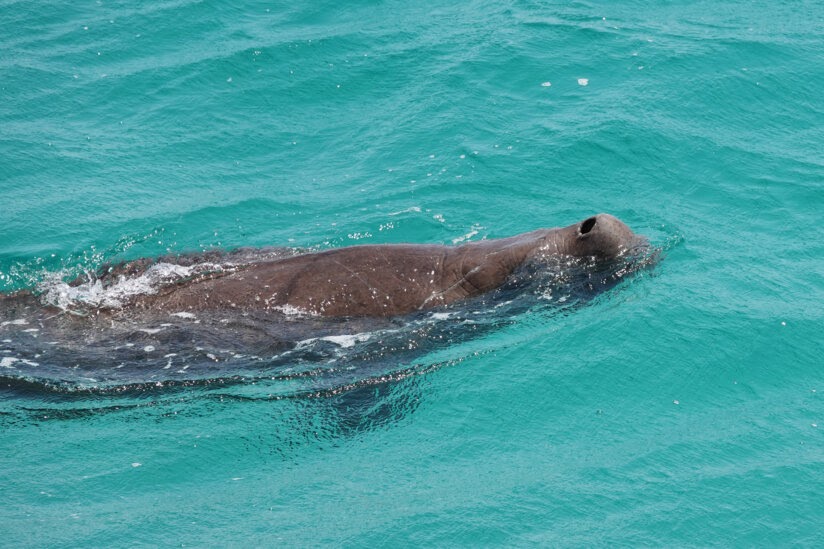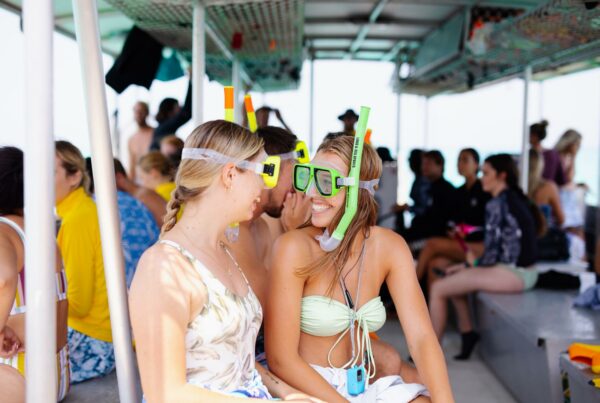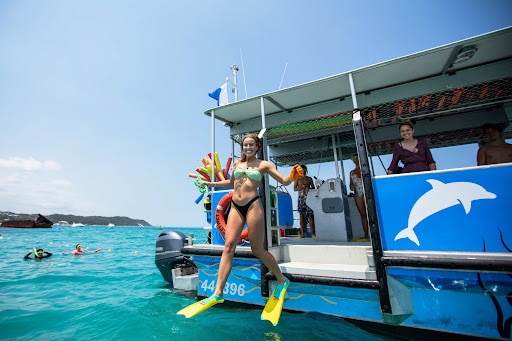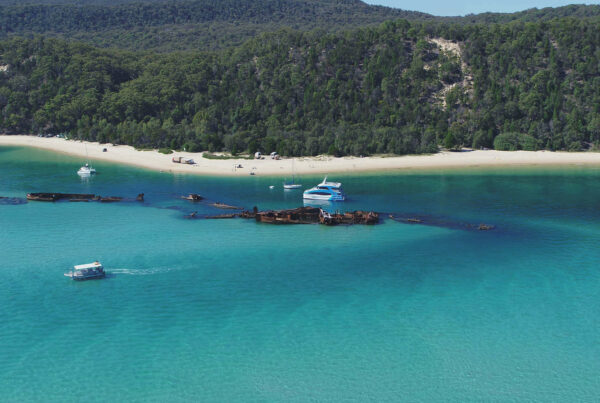Dougie: Our favourite dugong

A day out to the Tangalooma Wrecks site at Moreton Island will be a fun-filled adventure you won’t soon forget! You will come face to face with a variety of marine creatures – ranging from colourful marine reef fish swimming in formation, live corals and strange looking starfish and sea urchins hiding amongst the reef. If you are lucky you may spot a green sea turtle gliding through the water or having a snooze on the sandy bottom. Pods of dolphins can also be encountered and, because they are naturally curious, they often swim very close to the boat and playfully ride the bow wave. Don’t forget your camera!
An encounter with one of the dugongs that call Moreton Bay home may well be on the cards. But don’t forget, dugongs are shy in nature and can be elusive. This just makes spotting one all the more exciting! Dugongs spend the majority of their days swimming peacefully through the shallows searching for food and munching on seagrass. They venture to the surface to breathe and have a quick look around, but unfortunately their eyesight is considered poor. Our crew will be on high alert – using their well-trained eyes to look for subtle clues that a dugong is nearby. As they search the shallow waters for these timid creatures often the first thing they see is a big brown or grey snout poking above the water. Dugongs surface with their snout to easily exhale and then take in a breath of fresh air. If you look closely you may see all the whiskers (vibrissae) around their mouth. Next, you may see a broad back break the water’s surface. If you see long scratches along the back, you have most likely spotted an adult female dugong.
The most well-known resident dugong we encounter on our tours is Dougie the dugong! His home range surrounds the Tangalooma Wrecks, and he is often seen patrolling for any adult females venturing into his territory. Dougie is always keen to meet (and chase!) the local females. Dougie, like other mature male dugongs, has two small tusks in his mouth. He can use these to compete with other males in his bid to win over a female. If Dougie wins the match, he will begin courting the adult female, and he will use his tusks to give her a back scratch, covering her back with marks. If you are lucky enough to see Dougie, have a good look to see if he has any fresh tusk wounds from recent battles with other males.
Each day, Dougie will spend most of his time diving to the seafloor to search for, locate and then slurp up patches of seagrass. He uses the sensitive bristles arranged around his upper lip to find, grasp and pull up seagrasses by their roots. Dougie, like other dugongs, uses his whiskers and snout like a vacuum, leaving the sandy bottom covered with track lines. Recent research tells us that dugongs are not herbivores, as was previously thought. They are mostly vegetarian, with the majority of their diet consisting of seagrasses. However, scientists have learned that dugongs will also snack on tiny creatures living along the sandy bottom (macro-invertebrates), such as ascidians (or sea squirts). Dougie may live to be 70 years old, grow to 3 metres in length and tip the scales at 400 kg.
Moreton Bay’s dugong population is thought to be somewhere between 600 and 800. This population is special for several reasons. Firstly, it is considered the largest population of dugongs living so close to a big city like Brisbane. Secondly, the Moreton Bay dugong population is located at the southern limit to their range on the east coast of Australia. Dugongs prefer warmer water temperatures and in Moreton Bay the sea surface temperature ranges from a chilly 18.0°C in winter to a cosy 27.0°C in summer. Thirdly, dugongs are quite rare around the globe, partly because they reach maturity late in life and don’t breed extensively. Also, they are heavily reliant on seagrass beds being plentiful and healthy, which requires good water quality and low pollution levels. Sadly, dugongs are classified as vulnerable in Queensland waters. So be sure to give Dougie a wave if you are lucky enough to see him!










